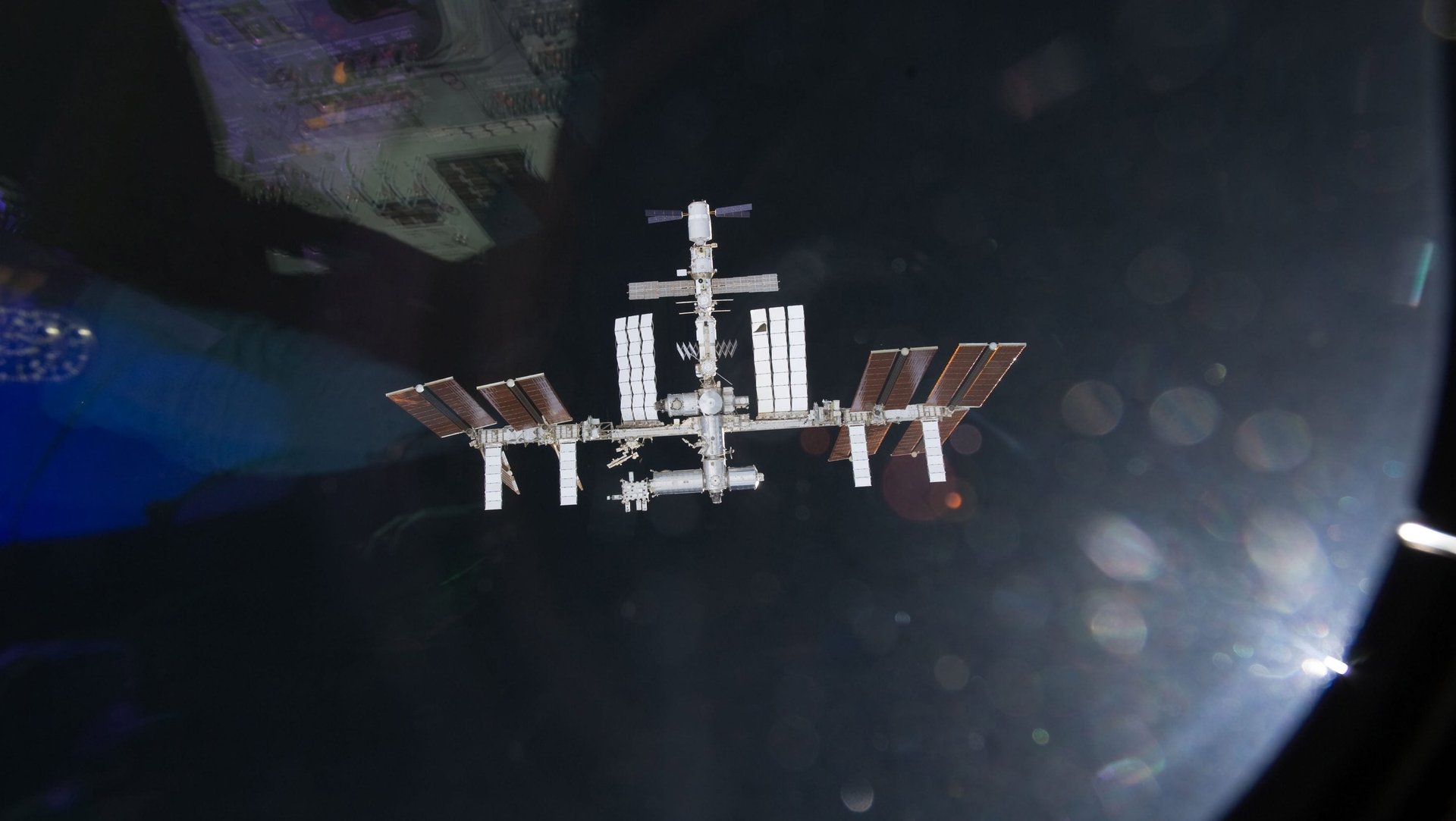China’s plummeting space station is just a taste of the world’s space junk problem
China’s first space lab, which stopped working in 2016, is expected to crash to earth in coming months. But unlike the Tiangong-1, many man-made objects remain in space way beyond their useful life, orbiting our planet endlessly and fueling space scientists’ worst nightmares.


China’s first space lab, which stopped working in 2016, is expected to crash to earth in coming months. But unlike the Tiangong-1, many man-made objects remain in space way beyond their useful life, orbiting our planet endlessly and fueling space scientists’ worst nightmares.
Since human beings began sending satellites into space in the late 1950s, we’ve been leaving behind trash with every launch. By one estimate there are some 170 million pieces of debris traveling at enormous speeds.
Remember the 2013 movie Gravity? In one of its most vivid scenes, two US astronauts, played by Sandra Bullock and George Clooney, have to abandon their spacecraft after a Russian satellite shutdown sets off a storm of debris, a type of event first imagined by NASA scientist Donald Kessler in 1978. As the density of objects in orbit increases, scientists consider such a cascading collision—where a collision creates shrapnel that creates yet more collisions in an unending loop—increasingly likely. If that were to happen, it would be very difficult, if not impossible, to leave Earth’s orbit.
Governments and companies are trying to figure out ways to deal with space debris before it comes to that. Some of these ideas may never—pun intended—get off the ground. Others might one day become a lucrative space service.
Step 1: Track the debris
As with any problem, the first step is to figure out just how big it is. In this case, that generally requires military capabilities. The US Strategic Command catalogues all artificial objects in orbit over a certain size via the Space Surveillance Network (SSN), a network of 30 sensors that uses both military and civilian radar and optical telescopes.
Space debris can include both natural bodies, such as meteoroids, and man-made objects that serve no useful purpose but are still orbiting Earth, such as inactive satellites, or discarded hardware. According to the November issue of Orbital Debris Quarterly News, a NASA publication, the US Space Surveillance Network has catalogued 18,747 artificial objects in space, including 1,738 operational satellites, as of August. When China destroyed its Fengyun-1C weather satellite in January 2007 in a troubling weapons test, it was one of the worst single contributors to orbital debris, creating some 3,300 fragments.
But most space debris is too small too track. The European Space Agency estimates that of the millions of debris particles in orbit, 670,000 bits are larger than 1 centimeter (0.4 inches), big enough to be capable of disabling the International Space Station. That’s because they’re moving at speeds of more than 17,500 mph (28,000 kmph).
The US Air Force Space Command is expected to soon activate a more powerful radar, called Space Fence, that will allow the surveillance system to catalog as many as 200,000 objects, as small as 4 inches. Lockheed Martin is working on the radar, housed on an atoll more than 2,000 miles from Hawaii. It could go into operation late this year or early next year; a second one is scheduled to go into operation in 2021.
Step 2: Nets, harpoons, lasers, magnets
Scientists across the world are exploring a bunch of ideas for how to grab a hold of or nudge debris towards Earth. And a few are beginning their first experiments.
This year, RemoveDebris, a junk-removing spacecraft project that’s funded by the European Union and being led by the University of Surrey’s Surrey Space Centre, is expected to head into space with help from Elon Musk’s SpaceX and Houston-based NanoRacks satellite deployment service. Among other things, the project’s supposed to try to wrangle junk with something akin to a space fishing net, and a harpoon. The junk it’s wrangling is it’s own—it’ll put out small objects and then try to retrieve them.
Those efforts are likely to feed into the European Space Agency’s plans to conduct the world’s first active debris removal in 2023, perhaps with a net or with a robotic arm. The mission, in the works since 2016, aims to capture an inactive ESA-owned satellite and burn it up during re-entry to the earth.
Meanwhile, in 2016, China sent the experimental Aolong-1, or Roaming Dragon satellite, into space. The idea is that it can try to grab debris with its robotic arm, though some fear the arm’s capabilities are military rather than housekeeping. It’s unclear how that’s going.
Singaporean private satellite startup Astroscale, meanwhile, is designing satellites to better detect and capture space junk, one of which could involve using magnets. It’s planning a demo in late 2019.
And some scientists are researching the idea of using lasers to nudge space junk onto a trajectory that would cause it to fall back the earth.
For now, though, the most important thing missions can do is planning for better disposal in the first place. This could mean having controlled re-entry or setting objects on an orbital track that means they would over time descend on their own.

Is space debris a threat here on earth?
If you’re not an astronaut, your chances of encountering a piece of space debris are extremely small. By one estimate, an average of 200 to 400 space objects re-enter the atmosphere every year, with the surviving pieces usually falling in an ocean or an unpopulated area. Still, about two decades ago, a 6-inch (15.2 cm) long light metal glanced off a woman as she was strolling through a park in Tulsa, Oklahoma. She wasn’t injured. NASA later confirmed the timing and location were consistent with the re-entry and breakup of the second-stage of a Delta rocket.
You might be able to see surviving fragments of the Tiangong-1, the 8.5 metric ton Chinese lab that first went into space in 2011, but is no longer in operation. It’s expected to land somewhere between the latitudes of 43° N and 43° S, according to the Aerospace Corporation, a federally funded space-research organization. That’s an area mostly covered by ocean, but that also includes parts of countries such as China and the United States. The exact location of re-entry might not be known till a day ahead. By one estimate, some of the lab’s parts might still weigh up to 100kg (220 lbs) when they crash.
In the meantime, you can monitor the lab’s real-time trajectory using websites like Heaven.above and satview.org. The China Manned Space Engineering Office is also providing a weekly update of the lab’s whereabouts. Presently it’s orbiting earth at an average height of 287 km (178 miles) (link in Chinese), about 80 km lower than it was in September 2016.
If you do see it, you can report the sighting, along with information such as the brightness of the objects, time, and location. Don’t touch the surviving fragments, though, because they could contain a corrosive substance.